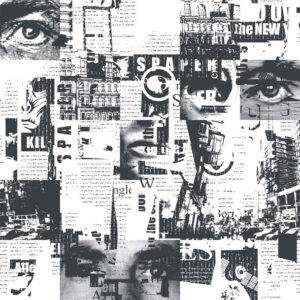Written by Scott Wilson

Creative writing is any kind of writing that employs creative literary or poetic techniques in the service of either fiction or non-fiction writing. It involves original composition and expressiveness of the individual author.
Ask ten creative writing professors what creative writing is, and you’ll get eleven different answers. Turn to the dictionary and the definition invokes invention and incorporation of imagination. But what are the limits of imagination? Where does invention begin?
Every sentence in every work ever written began as an act of creation in the mind of the writer.
Creative writing may be most easily defined by what it is not…
- Journalism
- Technical writing
- Professional or business writing
- Scholarly or academic writing
Creative writing is the entire body of the writer’s craft that falls outside the boundaries of the ordinary.
Yet you will find many entries in the canon of those fields that might also be considered creative writing. No one would consign Truman Capote’s groundbreaking In Cold Blood to the sterile cells of mere journalism. But that haunting novel is unquestionably also an important work of investigative reporting.
So, what is creative writing, if a non-fiction novel of a horrific quadruple murder falls into the same scope as a classic of American literature like To Kill a Mockingbird?
It has to do with style and art. Creative writing goes to the heart of the individual expressiveness of the writer. It breaks the boundaries of the typical. That’s an exercise of artistic skill that can happen in any topic, toward almost any goal. And it’s the heart of what it is to be a writer, no matter what you write about.
Defining creative writing isn’t easy. Rooms full of the best authorities routinely disagree. But what is creative writing, isn’t the most interesting question to ask here. Instead, we would be best served by asking another:
Why Is Creative Writing Important?
 Here is a more worthy question! And it’s one that gets to the heart of defining creative writing.
Here is a more worthy question! And it’s one that gets to the heart of defining creative writing.
Storytellers were plying their craft thousands of years before the written word was invented. The creative spark doesn’t belong to words. It may not even depend on language. It draws instead on a deep part of what it is to be human. Invention, imagination, the urge to create… these are all deep and vital parts of the human experience.
Creative writing is important because it is evocative.
That well of creativity flows forth in many arts and forms of expression. But in creative writing it has found a medium where it can be both preserved and shared. It’s a method of human connection that has no expiration date, no geographical or even cultural limit.
Writers touch the souls of their contemporaries first. But like Shakespeare, Wordsworth, and Lady Murasaki, their reach may also span generations.
Creative Writing Fuels Communication in All Forms of Writing
Although fiction is the first refuge of creative writing, that expressiveness serves the purposes of just about any kind of author.
The goals of most other forms of writing are focused on various kinds of literal communication. A journalist seeks to convey the facts and the context of important news stories. Technical writers need to communicate the details of operating programs and machinery, clearly describing all kinds of minute details with zero ambiguity. Business communications are created with a view toward clarity and concision—helping readers get the main points of the piece quickly and without confusion.
Creative writing can also help to serve these purposes.
Creative writing taps into a different level of communication. While it may, and often does, aspire to other goals like offering clarity and detail, it also goes toward developing emotional connection. The reader will take away more than mere words from a piece of creative writing.
Creative Writing is Important For Making Other Kinds of Writing Compelling
Just as importantly, creative writing entertains. In a story about the importance of algorithmic and high-frequency trading, all kinds of technical details must be absorbed to make sense of the issues. Both technological and economic concepts have to be introduced. In a comprehensive article about the subject, readers from outside the field could be expected to nod off about two pages in.
But put the story in the hands of Michael Lewis, and you get Flash Boys, a New York Times Best Seller.
It’s not important that Flash Boys did well because it was entertaining, however. It’s important because the market trends and activities it described have real impacts on many of the readers. Retirement funds, college savings, family investments… all are affected by the story Flash Boys tells. Today, millions of readers who would never otherwise have understood how their investments were being handled can make an informed assessment… thanks to creative writing.
How To Separate Creative Writing From Less Creative Forms of Writing
 The degree to which writing that falls outside the creative writing pantheon still involves some level of creativity may be a question for psychologists or neurologists. Within the field of writers, it becomes as subjective a judgement as with any sort of art.
The degree to which writing that falls outside the creative writing pantheon still involves some level of creativity may be a question for psychologists or neurologists. Within the field of writers, it becomes as subjective a judgement as with any sort of art.
In general, it’s safe to say that a piece of writing is creative when it makes use of literary devices such as:
- Narrative development
- Character
- Tropes
- Imagination and invention
In Cold Blood passes this test due to Capote’s use of characterization, plot development, and world-building. It’s considered today to be a pioneering example of the non-fiction novel, a paragon of the creative writing world.
The original crime reports, local newspaper articles, and subsequent court documents detail the same events with the same participants. Yet they are not works of creative writing. The incident is described in dry, straightforward, technical language. The timeline is linear and offered without consideration of pace or drama.
Both Capote and the authors of those other articles and documents set out to inform. But Capote’s goal was also to captivate.
New Journalism Tells the Story of How Creative Writing Has an Important Role in Non-Fiction
 In Cold Blood is seen today as one of the first entries in the field of New Journalism. Capote and his contemporaries, such as Joan Didion, Tom Wolfe, and Hunter S. Thompson broke new ground in the use of traditional creative writing styles and techniques to tell important journalistic stories.
In Cold Blood is seen today as one of the first entries in the field of New Journalism. Capote and his contemporaries, such as Joan Didion, Tom Wolfe, and Hunter S. Thompson broke new ground in the use of traditional creative writing styles and techniques to tell important journalistic stories.
Books like Wolfe’s The Right Stuff mixed truth and dramatization, documentation and invention, to tell larger stories about serious events. In dramatizing those stories, New Journalism writers also drew more readers and achieved broader awareness of the stories.
At the same time, long-form New Journalism pieces, deeply researched and documented, were able to report stories in depth in a way that traditional journalism often did not. By invoking plot, characterization, and narrative structures, the New Journalists could keep readers involved in long and complex issues ranging from crime to politics to culture.
New Journalism is important in defining what is creative writing because it is clearly an example of both creative and journalistic writing. It demonstrates the ways that creative writing can serve other forms of writing and other kinds of writers.
Of course, it’s also possible to come at the divide from the other shore. Categories of writing that are clearly creative in nature include:
- Novels and novellas
- Flash fiction and short stories
- Plays and film scripts
- Poetry
These works incorporate elements of storytelling that may not always be present in other forms of writing. A newspaper article will often have a setting, action, and characters; creative writing will offer plot, pacing, and drama in describing the same story.
What is Creative Writing Coursework Like in College Degree Programs?
 One way to explain what creative writing is, may be to look at how it is taught.
One way to explain what creative writing is, may be to look at how it is taught.
All university students are exposed to basic coursework in English language and communication skills. These all go to the elementary aspects of writing—the ability to construct a sentence, a paragraph, a paper. They teach grammatical rules and other elements that make a work readable to any reader of the English language.
Even the general education requirements in college programs touch on creative writing, however. Students may be assigned to write essays that explore creative styles and imagination. They’ll be assigned to read novels and stories that are time-tested examples of the finest kinds of creative writing. And they’ll be asked to explore their impressions and feelings, and to exercise their imaginations and analyze the intent of the author.
Creative writing programs go beyond the basics to touch the imagination of the writer.
Creative writing exists just on the other side of those general English and literature courses. Students in creative writing classes will be asked to take the extra step of creating their own stories using the techniques they have learned.
In fact, they may be encouraged to break the same rules that were so laboriously learned in their regular English writing classes. Creative writing works to allow writers to tap into their own imagination and emotion to forge a deeper connection with readers.
Student Workshops Offer an Interactive Way of Learning What Creative Writing Is All About
Creative writing degrees will go much further into developing a sense of what creative writing is. They continue to include many reading assignments. But instructors also introduce concepts such as:
Genre
Genre is the method used to categorize written works. Creative writing programs explore the tropes and expectations that exist for different genres and deconstruct them for better understanding.
Story structure and form
The structure and form of a novel and a short story are very different. Creative writing programs explore different formats and how they impact creative storytelling.
Plotting
Plot is not a universal feature of creative writing, but a good plot can make or break a creative work. Classes look at the features and composition of plot, and also teach plotting.
Narration
Voice, tone, and creative expression all come out of the narration of a piece of creative writing. Creative writing courses explore both the textbook forms of narrative and show how to use it to serve plot and story.
Style and rhythm
One clear feature of creative writing in all genres is that it rests on a sense of rhythm and of styling that other types of writing ignore. Many courses found in creative writing degree programs explore the ways in which writing style serves story and hooks the reader.
In addition to formal classes, students will better learn why creative writing is important and the purposes it serves through workshops. These informal gatherings are designed to foster discussion, to present examples of different types of writing, and to critique and hone individual creative writing skills.
Through that process, creative writing degrees help students better identify what creative writing is and how to use it effectively.
Creativity is Important No Matter What Your Career Goals in Writing May Be
 Human beings are social creatures. We learn from a young age to read beneath the surface of words. We tap into tone, expression, and vocabulary to pull out nuance and deeper levels of meaning from conversation or text.
Human beings are social creatures. We learn from a young age to read beneath the surface of words. We tap into tone, expression, and vocabulary to pull out nuance and deeper levels of meaning from conversation or text.
Creative writing training allows writers in any genre to develop more complete, more meaningful, and more memorable ways to get a point across. Using the skills and techniques learned in creative writing courses can inject humor, gravity, and other sensations into any piece of writing. And those very techniques can improve concision and clarity.
Figuring out what creative writing is and what it is not, is the first thing you should leave behind in a writing career. The dry definitions of the dictionary or droning English professors are the last place you should look.
Creative writing is the process of engaging your imagination and talent to serve the purpose of whatever piece of writing you are working on. And that’s why creative writing is important.


